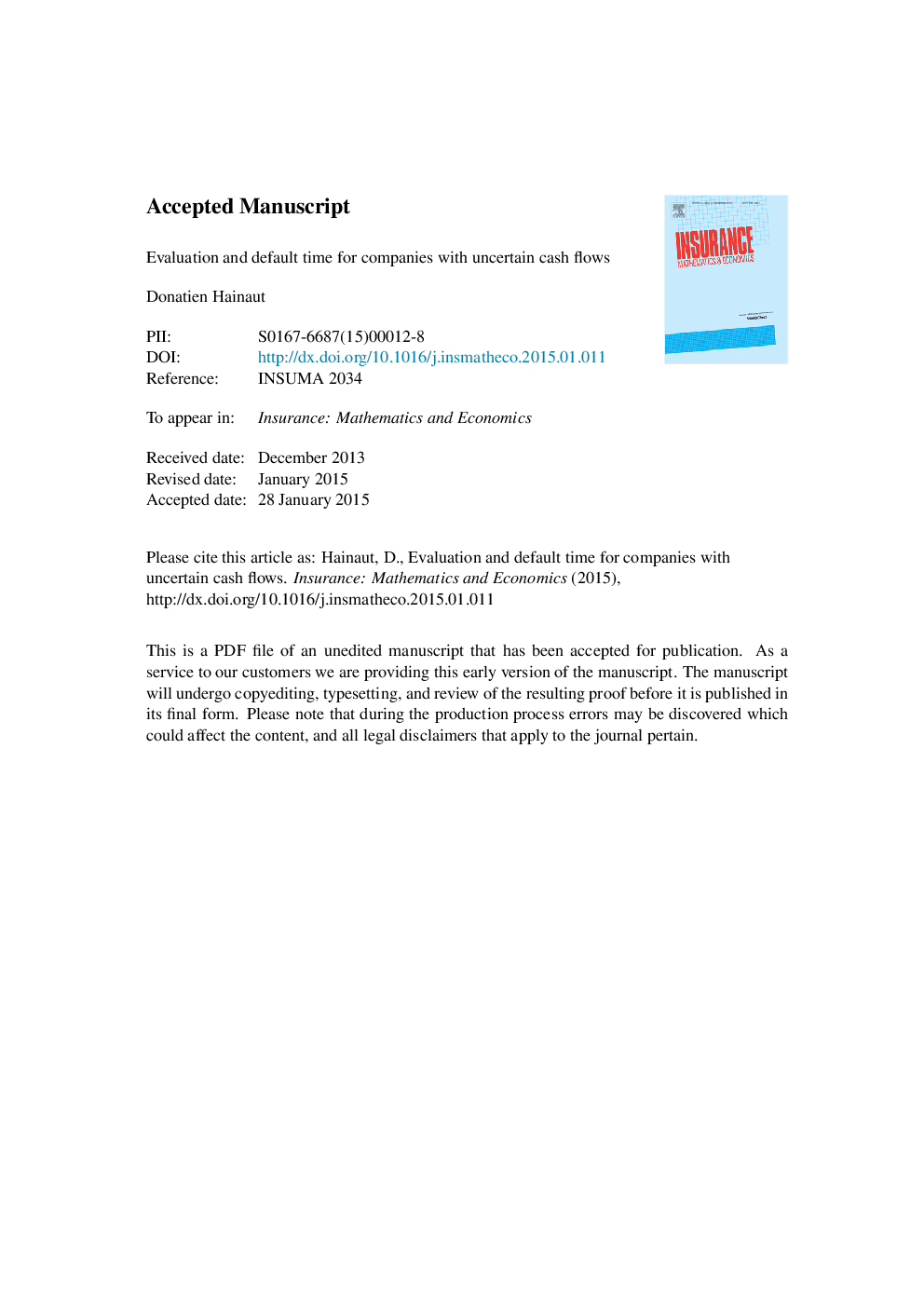| Article ID | Journal | Published Year | Pages | File Type |
|---|---|---|---|---|
| 5076445 | Insurance: Mathematics and Economics | 2015 | 23 Pages |
Abstract
In this study, we propose a modelling framework for evaluating companies financed by random liabilities, such as insurance companies or commercial banks. In this approach, earnings and costs are driven by double exponential jump-diffusion processes and bankruptcy is declared when the income falls below a default threshold, which is proportional to the charges. A change of numeraire, under the Esscher risk neutral measure, is used to reduce the dimension. A closed form expression for the value of equity is obtained in terms of the expected present value operators, with and without disinvestment delay. In both cases, we determine the default threshold that maximizes the shareholder's equity. Subsequently, the probabilities of default are obtained by inverting the Laplace transform of the bankruptcy time. In numerical applications of the proposed model, we apply a procedure for calibration based on market and accounting data to explain the behaviour of shares for two real-world examples of insurance companies.
Related Topics
Physical Sciences and Engineering
Mathematics
Statistics and Probability
Authors
Donatien Hainaut,
